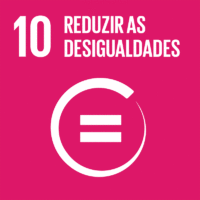Ciência_Iscte
Publicações
Descrição Detalhada da Publicação
Assessing preschoolers interactive behaviour: a validation study of the “Coding System for Mother–Child Interaction”
Título Revista
Child: Care, Health and Development
Ano (publicação definitiva)
2018
Língua
Inglês
País
Reino Unido
Mais Informação
Web of Science®
Scopus
Google Scholar
Esta publicação não está indexada no Overton
Abstract/Resumo
BACKGROUND:
The preschool years are a period of great developmental achievements, which impact critically on a child's interactive skills. Having valid and reliable measures to assess interactive behaviour at this stage is therefore crucial. The aim of this study was to describe the adaptation and validation of the child coding of the Coding System for Mother-Child Interactions and discuss its applications and implications in future research and practice.
METHODS:
Two hundred twenty Portuguese preschoolers and their mothers were videotaped during a structured task. Child and mother interactive behaviours were coded based on the task. Maternal reports on the child's temperament and emotional and behaviour problems were also collected, along with family psychosocial information.
RESULTS:
Interrater agreement was confirmed. The use of child Cooperation, Enthusiasm, and Negativity as subscales was supported by their correlations across tasks. Moreover, these subscales were correlated with each other, which supports the use of a global child interactive behaviour score. Convergent validity with a measure of emotional and behavioural problems (Child Behaviour Checklist 1 ½-5) was established, as well as divergent validity with a measure of temperament (Children's Behaviour Questionnaire-Short Form). Regarding associations with family variables, child interactive behaviour was only associated with maternal behaviour.
CONCLUSIONS:
Findings suggest that this coding system is a valid and reliable measure for assessing child interactive behaviour in preschool age children. It therefore represents an important alternative to this area of research and practice, with reduced costs and with more flexible training requirements. Attention should be given in future research to expanding this work to clinical populations and different age groups.
Agradecimentos/Acknowledgements
--
Palavras-chave
Child interactive behaviour,Coding system,Mother-child interaction,Observational measure,Preschoolers
Classificação Fields of Science and Technology
- Medicina Clínica - Ciências Médicas
- Psicologia - Ciências Sociais
Registos de financiamentos
| Referência de financiamento | Entidade Financiadora |
|---|---|
| POCI-01-0145-FEDER-007653 | COMPETE 2020 |
| SFRH/BD/96001/2013 | Fundação para a Ciência e a Tecnologia |
| PTDC/PSI-PCL/116897/2010 | Fundação para a Ciência e a Tecnologia |
Contribuições para os Objetivos do Desenvolvimento Sustentável das Nações Unidas
Com o objetivo de aumentar a investigação direcionada para o cumprimento dos Objetivos do Desenvolvimento Sustentável para 2030 das Nações Unidas, é disponibilizada no Ciência_Iscte a possibilidade de associação, quando aplicável, dos artigos científicos aos Objetivos do Desenvolvimento Sustentável. Estes são os Objetivos do Desenvolvimento Sustentável identificados pelo(s) autor(es) para esta publicação. Para uma informação detalhada dos Objetivos do Desenvolvimento Sustentável, clique aqui.

 English
English



